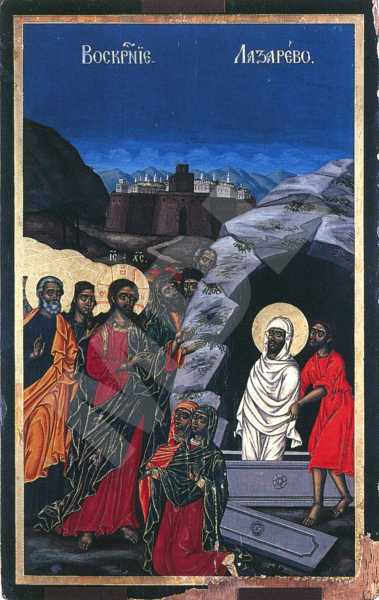The Raising of Lazarus
Type:
Icon
Period:
1840 year
Toma Vishanov-Molera, born around 1750, painter of icons and murals, founder of the Bansko school of art. He grew up in the family of the clergyman Vishan. Around 1765 he went to Vienna, where he studied painting. It is not known who were his teachers there or when he returned to Bansko. His fellow villagers called him the Moler, Molera(from German Maler ‘painter’), whence the entire family's surname. Under the influence of the European 18th century art Toma Vishanov painted his works in a new manner, unknown until then in Orthodox art. The figures are realistic, vivid, expressive. Toma Vishanov is an innovator in the early period of Bulgarian Renaissance. His ideas on art were not understood and at first were rejected by his contemporaries. His work has not been studied extensively. He died after 1811 in Bansko.
Dimmensions (cm):
71
/ 46
/ 2.5
Location
Country: Bulgaria
Province: Blagoevgrad
Town: Bansko
Museum: Museum complex
Source
Country: Bulgaria
Province: Blagoevgrad
Village: Osenovo
Church: St. Archangel Michael
Object identification notes
Toma Vishanov-Molera (?)
Description
A composition of many figures, developed in the form of a frieze in the icon's lower half. Painted on the left-hand side is the group of the apostles, headed by Christ, portrayed in full face and in full length. On the right-hand side, standing upright in an open sarcophagus, is the figure of Lazarus, supported by a servant. In the foreground, kneeling and asking a blessing, are Martha and Mary, the sisters of Lazarus. Pictured in the center of the composition and partially covered by Christ, is the group of onlookers, the eye-witnesses of the miracle. The background is a landscape with a high horizon, taking up the upper half of the icon. The dominant part of the landscape is taken up by a city, surrounded by defensive walls, against the background of mountains.
Iconographical technique: Combined
Distemper with the addition of a certain quantity of drying oil in the vehicle. The layer of the painting is a thin one, with a smooth texture, executed with a classical technique of painting. The modelling of the details is fine and very precise. There is a thin varnish cover over the entire icon. The gilding is on bole with gold-leaf, subsequently polished. Liquid gold had also been used in the modelling of the garments.
Base material: Wood
The icon's base is a one-piece softwood panel with two inserted beams. The ground coat is of plaster, laid in several layers directly over the base and well polished.
State, restoration traces and comments
There are no traces of any previous restoration work.


